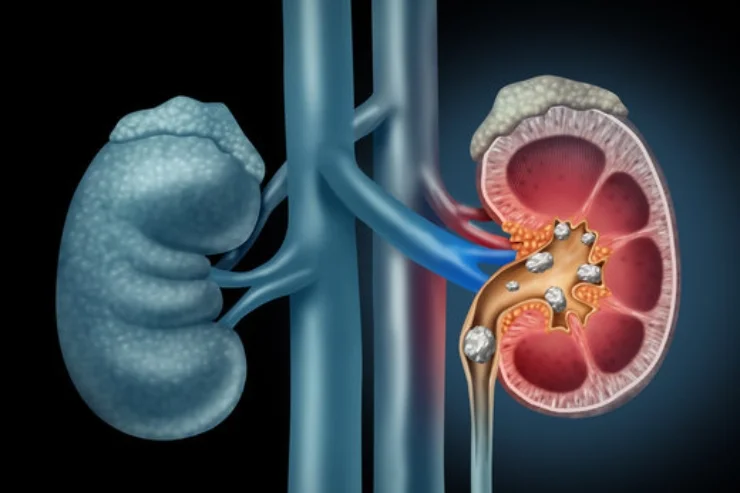Urinary Stones
- Home
- Urinary Stones

Urinary Stones
Urinary stones, also known as kidney stones or urolithiasis, are hard deposits made of minerals and salts that form in the kidneys. They can cause significant pain and may lead to complications if not treated. Various treatment options exist depending on the size, type, and location of the stones.
Ureteroscopy with Laser Lithotripsy (URSL)
URSL is a minimally invasive procedure used to treat ureteral stones and some kidney stones.
- Indications:
- Typically recommended for stones located in the ureters or smaller kidney stones (<2 cm) that cause obstruction or severe symptoms.
- Procedure:
- A ureteroscope (a thin, flexible tube) is inserted through the urethra and bladder into the ureter.
- Once the stone is reached, a laser fiber is used to break the stone into smaller fragments, which can then be removed or passed naturally.
- Benefits:
- Minimally invasive with quicker recovery times and less postoperative pain compared to open surgery.
Percutaneous Nephrolithotomy (PCNL)
PCNL is a procedure used to remove larger kidney stones (typically >2 cm) directly from the kidney through a small incision in the back.
- Indications:
- Recommended for large or complex kidney stones that cannot be treated effectively with URSL or extracorporeal shock wave lithotripsy (ESWL).
- Procedure:
- A small incision is made in the skin to create a passage directly into the kidney.
- Using a nephroscope, the stone is either removed in its entirety or broken into smaller pieces using ultrasound or laser energy.
- Benefits:
- Highly effective for large stones with a high success rate, allowing for direct access to the kidney.
Retrograde Intrarenal Surgery (RIRS)
RIRS is a minimally invasive technique designed to remove kidney stones residing within the renal pelvis or calyces by using a flexible ureteroscope.
- Indications:
- Ideal for medium-sized stones (up to 2 cm) or those in difficult-to-reach areas of the kidney.
- Procedure:
- A flexible ureteroscope is passed through the urethra and bladder into the kidney.
- The stone is fragmented using laser energy, and the fragments are either suctioned or allowed to pass naturally.
- Benefits:
- Minimally invasive approach with no external incisions, typically resulting in less pain and quicker recovery time.
Choosing the appropriate treatment for urinary stones depends on several factors, including the size and location of the stones, the patient’s anatomy, and overall health. Consultation with a urologist is essential for determining the best treatment plan.
